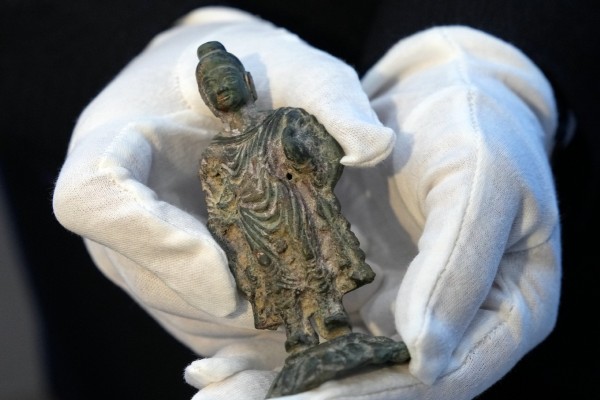Cultural relics to be better protected

An archaeologist displays the standing statuette of the Gautama Buddha discovered in Xianyang, Shaanxi province. [Photo by Li Yibo/Xinhua]
The National Cultural Heritage Administration — along with the Publicity Department of the Communist Party of China Central Committee, the Supreme People's Court, the Supreme People's Procuratorate, the Ministry of Public Security, the Ministry of Culture and Tourism and the General Administration of Customs — jointly released a work plan for 2023 to 2025 to crack down on crimes related to cultural relics on Friday.
The latest plan aims to strengthen campaigns against cultural relics-related crimes, and improve working mechanisms so as to disincentivize criminal attempts, the document stated.
According to the work plan, until 2025, solid progress will be made in combating such crimes, and the safety and integrity of cultural relics will be significantly improved.
At that time, there will be clear notices on who should be responsible for the security of items in each museum and cultural relics institute. Protective facilities and practices will be established in all world heritage sites, imperial tombs, large-scale ancient cultural heritage and tomb sites, key grotto temples, important tablets with inscriptions, and stone carvings and museums.
Moreover, the working mechanism will be improved, basically forming a pattern in which the government plays the leading role and various departments cooperate with each other in preventing and cracking down on violations, while encouraging the general public to assist where possible.
The plan points out 17 key tasks to realize the campaigns' goal, which mainly focuses on cooperation between different government departments, stricter measures against theft of key cultural relics, establishing facilities and improving mechanisms.
It also mentions the establishment of a more effective information center focusing on such crimes, an information platform logging all lost or stolen cultural relics and enhancing the ability to analyze and study such information so as to provide informational and technological support to protection efforts.
To build a good social atmosphere, there are calls to improve people's awareness of protecting cultural relics by publicizing typical cases and people who have made outstanding contributions to the cause, so that more can play an active role in related efforts.







